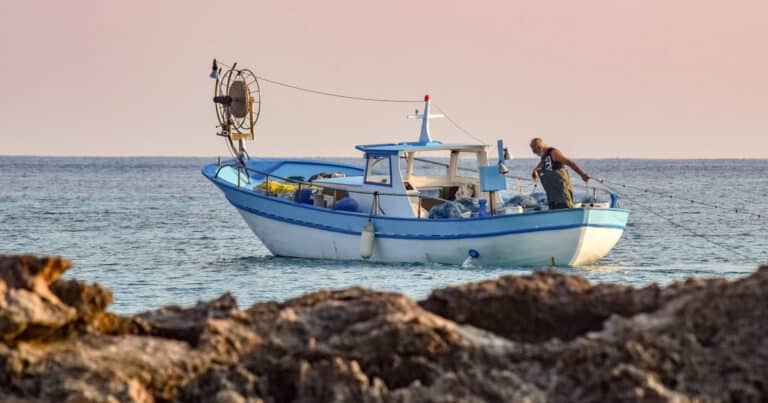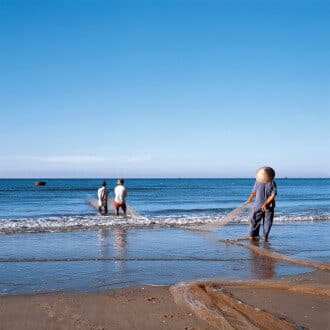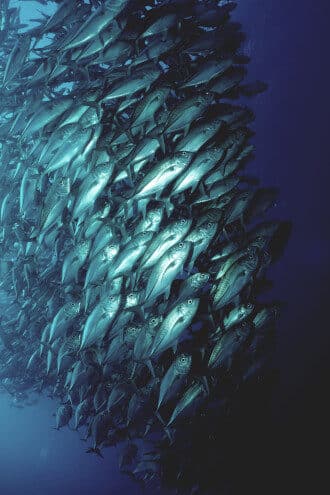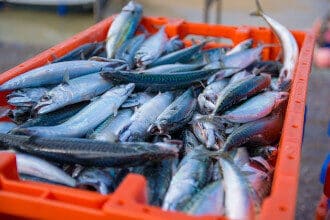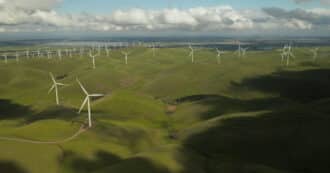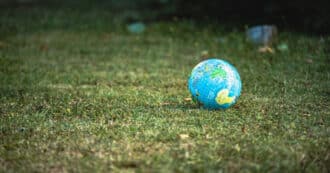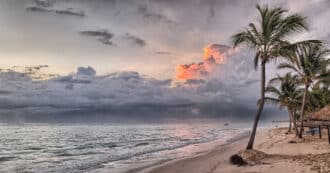What is Maximum Sustainable Yield?
Maximum sustainable yield, or MSY, refers to the optimal amount of fish that can be harvested consistently from an area over an extended period of time. This is done by harvesting fish at rates that won’t cause any disruptions to the ecosystem’s balance.
Harvesting fish at an ecosystem’s MSY level is incredibly important for both the well being of the ecosystem and the fishing industry. Overfishing can lead to devastating impacts that cause ecological disaster, as well as lowered catch rates.
However, while MSY is an important measurement to know, it is often difficult to calculate. Biologists must determine the growth rate and mortality rates of their fish populations in order to ascertain an accurate MSY level. This is not always easy as fish stock can be hard to monitor, and there are a variety of other factors that could impact a fish population.
This has led to experts trying to find other ways to determine a sustainable level of fishing, such as maximum economic yield, which looks at the most economically productive rates of fishing. But however you determine the most effective fishing method, taking the health of fish population into consideration is important for both the fishing industry and marine ecosystems.
The Importance of Sustainable Fishing
The UN estimates that almost six billion tons of fish, invertebrates, and other aquatic species have been extracted from the oceans since 1950. This kind of overexploitation by the fishing industry has greatly threatened the survival of numerous commercial fish species, causing a drastic blow to marine biodiversity around the world.
This over extraction of fish is not just detrimental to the biodiversity of the oceans, but it also has a devastating human impact as well. While the commercial fishing industry has increased their intake of fish, local fishing industries have been left with depleted stocks. This has put billions of people whose livelihoods depend on their ability to catch fish in jeopardy, forcing them to seek out more fertile fishing grounds.
As a result of fish stocks becoming depleted, more and more people are turning to illegal fishing methods, making the problem even bigger. If we don’t make a bigger effort to fish sustainably, we can expect to find ourselves with almost nonexistent fish stocks.
Implementing Maximum Sustainable Yield
In practice, MSY involves catching enough fish to meet fish market demands while still leaving fish populations high enough to recover and stabilize. The UN and many other countries use the standard of MSY to implement fishing quotas and other fishing regulations. But even with these regulations in place, achieving totally sustainable fishing is still reliant on our ability to measure and determine a feasible MSY.
Calculating Maximum Sustainable Yield
There are many different factors and natural fluctuations that go into calculating MSY. This makes it difficult for fisheries scientists to get an exact determination.
But in order to begin calculating MSY it is first important to determine an area’s fish biomass and its change over time. Biomass is the total weight of a certain kind of fish in an area, and by looking at its change overtime, we can start to determine an optimum sustainable yield. However, this number varies greatly from species to species, as different species of fish will have a different life history and reproduce, grow, and die at different rates.
In order to accurately calculate biomass, it is important to look at the growth rate and reproductive rate of a fish population minus its mortality rates. Once the biomass is determined the biomass maximum sustainable yield, or BSMY, can be calculated. This is the biomass level at which fish can be most optimally caught. Fishing at rates both above and below the BSMY will have consequences for ocean wildlife and ocean fisheries.
When fishing below BMSY, fish stocks become overfished and populations decline. When a fish population gets low enough it loses its ability to reproduce quickly. This makes it even harder for fish stocks to recover from fishing.
On the other side of the spectrum, when a fish stock is fished above BMSY, population growth eventually reaches carrying capacity. This can create issues with food and resource availability, leaving a population made up of older, larger, and slow-growing fish. This leaves less of the fish population available for fisheries to harvest and sell, impacting the fishing industry.
Issues With Maximum Sustainable Yield
While the MSY model has been widely used to help create a global system of sustainable fishing for the fishing industry, many experts believe that the system is fairly outdated. This is mainly due to the fact that MSY is so difficult to accurately calculate. With such variable calculations for a sustainable fishing model, it is very easy for fisheries managers to overshoot the amount of fish they harvest.
Fisheries management will often use MSY as a target for fishing rather than a limit, which becomes problematic as it is very difficult to get an accurate MSY, and fisheries will often overshoot and overfish their stocks. Many experts suggest fishing a little less than the MSY, in order to give some leeway for inaccurate calculations, making it less likely that a fish stock will be overfished.
Alternatives to Maximum Sustainable Yield
With our oceans being increasingly overfished, and the inaccuracy of MSY, many people are looking for a better alternative to set a standard for sustainable fishing. While MSY can still be effective when used properly, some experts believe that the maximum economic yield system, or MEY, could be a viable alternative.
Maximum Economic Yield
MEY is used to set fishing quotas at the most economically efficient rate of harvest. While this may seem like it would not take biomass or fish biodiversity into account; when accounting for the money spent on boats and labor, fishing rates are actually lower at MEY than MSY. Not only is MEY much easier to calculate, but it also save fisheries money, and allows for more plentiful fish populations.
Maximum Sustainable Yield and Religion
Pursuing the maximum sustainable yield sounds good, but in practice, the “tragedy of the commons” tends to win out. Here’s a selection from the book Eco Bible explaining how the tragedy of the commons works:
The Tragedy of the Commons
Exodus 24:7 – Then He Took the Record of the Covenant and Read It Aloud to the People. And They Said, “All That the Lord Has Spoken We Will Faithfully Do!”
The Hebrew verse states literally, “We will do and we will understand!” The Talmud tells of a man who asks the sage, Rava, why the Israelites preceded “We will understand” with “We will do.” After all, the normal way is to understand first and then to decide whether or not to act.
Rava explained that one must act according to the Torah’s laws without a complete understanding, because we must trust that God would only lead us on the right path. Where a whole group or nation must make a decision, such as in the acceptance of the Torah, acting on trust is even more imperative as it is unlikely that everyone will fully understand.
Ecological economics speaks about the “tragedy of the commons,” a situation in a shared-resource system where individuals act independently, according to their own self-interest. In so doing, they behave contrary to the common good by depleting or spoiling a resource through their collective actions. The classic, historical example is of many shepherds grazing sheep on a collective field (the commons). Each shepherd tries to maximize his or her grazing of sheep, even though overgrazing is ultimately to the long-term detriment of all. Professor Elinor Ostrom of Indiana University was awarded the Nobel Prize in Economics for characterizing the ways that cooperative agreements allow communities to break out of the “tragedy of the commons” dynamic. A group of sheep owners sharing one field for grazing might agree collectively that it would be sensible to leave the field fallow for a period of time in order to regrow its grass.
If everyone could be trusted to cooperate, it would be in their combined best interests to leave enough grass to regrow (or in the case of fishing, enough fish to breed). But in the absence of cooperation, many individuals will consume the complete stock of grass or fish. In this situation, the best outcome would be achieved if each individual would “do and then understand.” In other words, their long-term best interests are achieved only when each person acts against their own short-term self-interest. At Sinai, the Israelites were modest enough to admit that they might not be able to see the whole picture and its long-term implications. When given good advice by those we trust, sometimes we need to “do” before we fully understand.
* Featured image source

